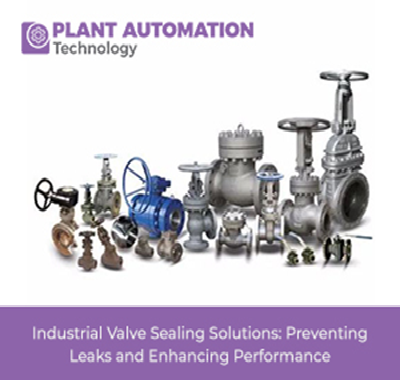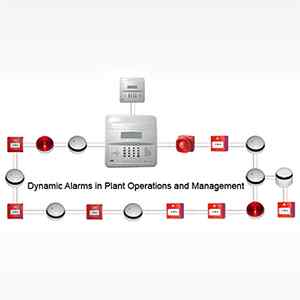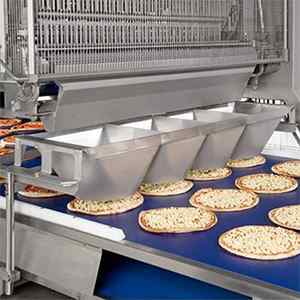Industrial Valve Sealing Solutions: Preventing Leaks and Enhancing Performance

Introduction
Valves play a pivotal role in various industrial processes, serving as gatekeepers for fluid flow and process control. Ensuring their proper functioning is crucial for maintaining operational efficiency, safety, and environmental protection. In this article, we delve into the critical aspect of preventing leaks in industrial applications, exploring the diverse sealing solutions that safeguard against leakage challenges.
Section 1: The Leakage Challenge: Why Prevention Matters?
Leaks in industrial processes can have significant implications that extend beyond immediate operational disruptions. Understanding why preventing leaks is crucial sheds light on the importance of robust sealing solutions.
Introduction to Leakage Challenges: Leaks, however small, can have profound consequences across industries. From chemical plants to oil refineries, leaks can disrupt operations and jeopardize safety.
• Operational Disruption and Financial Impact: Leaks lead to downtime and reduced production rates. Operations are halted for repairs, impacting overall productivity. The financial repercussions range from increased maintenance costs to lost revenue due to reduced output.
• Safety Hazards: Leaked materials, especially hazardous substances, can pose severe risks to workers, equipment, and the environment. Toxic gases, flammable liquids, and corrosive chemicals can cause accidents, fires, and long-term health issues.
• Environmental Consequences: Environmental contamination is a serious concern. Leaked chemicals can find their way into soil, groundwater, and surface water bodies, causing long-lasting ecological damage and regulatory penalties.
• Regulatory Compliance and Reputation: Leaks can lead to violations of environmental and safety regulations, resulting in fines and legal actions. Additionally, frequent leaks can tarnish a company's reputation, affecting customer trust and investor confidence.
• Waste and Resource Management: Leaks lead to the wastage of valuable resources, including raw materials and energy. Preventing leaks aligns with sustainable practices, conserving resources, and reducing the carbon footprint.
• Operational Efficiency and Consistency: Preventing leaks enhances process efficiency by maintaining consistent flow rates and preventing unexpected shutdowns. This translates into higher overall operational efficiency.
• Minimizing Downtime: Effective sealing solutions can significantly reduce downtime associated with leak-related maintenance and repairs. This translates to increased production and improved bottom-line results.
• Employee Safety and Morale: Ensuring a leak-free environment prioritizes employee safety and well-being. A safe working environment boosts morale, job satisfaction, and overall productivity.
• Long-Term Viability: Industries that prioritize leak prevention are better positioned for long-term success. Sustainability initiatives and responsible practices attract stakeholders and contribute to industry leadership.
As leaks encompass financial, safety, environmental, and operational concerns, preventing them becomes a paramount priority for industries.
Section 2: Types of Valves and Leakage Points
Introduction to Valve Types: Industrial processes rely on a variety of valve types to regulate fluid flow and control process parameters.
Understanding these valve types and their potential leakage points is crucial for effective leak prevention.
Gate Valves: Gate valves are commonly used for on/off flow control. Potential leakage points include:
• Stem Seal: The junction where the valve stem meets the valve body can be prone to leakage if not properly sealed.
• Gate-to-Seat Interface: The area where the gate closes against the seat can experience leakage if the seal is compromised.
Globe Valves: Globe valves are versatile and provide precise control over fluid flow. Leakage points include:
• Stem Seal: Similar to gate valves, the stem seal is a critical area for preventing leaks.
• Body-to-Bonnet Seal: The connection between the valve body and the bonnet is a potential point of leakage.
• Disk-to-Seat Interface: Proper sealing is essential at the disk-to-seat interface to prevent flow leakage.
Ball Valves: Ball valves offer efficient and fast shut-off capabilities. Leakage points encompass:
• Stem and Ball Connection: The stem and ball connection must be properly sealed to prevent leaks.
• Ball-to-Seat Interface: Effective sealing at the ball-to-seat interface is essential to ensure leak-free operation.
Butterfly Valves: Butterfly valves are used for large-volume flow control. Leakage points include:
• Shaft Seal: Proper sealing around the shaft area is crucial for preventing leaks.
• Disc-to-Seat Seal: Ensuring an effective seal between the disc and seat is essential to prevent leakage.
• Body-to-Bonnet Connection: This connection can also be susceptible to leaks if not properly sealed.
Understanding the various valve types and their potential leakage points is fundamental for designing effective sealing solutions. Proper sealing mechanisms and materials must be employed to prevent leaks at critical junctions within each valve type.
Section 3: Common Sealing Mechanisms
Introduction to Sealing Mechanisms: Preventing leaks in industrial valves requires effective sealing mechanisms that can withstand various operating conditions. Different types of sealing mechanisms are employed to ensure reliable and leak-free performance.
Gland Packing: Gland packing is a traditional sealing mechanism that involves wrapping packing material around the valve stem. It provides a compression seal when the gland is tightened. However, gland packing has limitations:
• Pros: Suitable for high-temperature and high-pressure applications.
• Cons: Requires regular adjustments, can result in friction-induced wear, and may not be ideal for all fluids.
Mechanical Seals: Mechanical seals consist of rotating and stationary components that create a dynamic seal. They are favored for their reliability in high-pressure applications:
• Pros: Excellent for preventing leaks in high-pressure environments.
• Cons: Initial cost and complexity compared to other sealing mechanisms.
O-rings and Gaskets: Elastomeric seals, such as O-rings and gaskets, provide simple yet effective sealing solutions:
• Pros: Easy to install, cost-effective, and versatile for various valve types.
• Cons: Limited to specific temperature and pressure ranges.
Butterfly and Ball Valve Seats: Sealing in butterfly and ball valves is achieved through elastomeric materials or metal-to-metal contact:
• Pros: Effective for low to moderate-pressure applications.
• Cons: May not be suitable for extreme temperatures or aggressive chemicals.
Section 4: Sealing Materials and Their Applications
Introduction to Sealing Materials: Choosing the right sealing material is crucial for ensuring effective leak prevention in industrial valve applications. Different materials are selected based on their compatibility with fluids, temperatures, and pressures.
Graphite: Graphite is commonly known for its high temperatures high-temperature and pressure resistance:
• Applications: Suitable for sealing in high-temperature processes, such as those in the petrochemical industry.
• Advantages: Withstands extreme conditions, provides excellent sealing performance.
PTFE (Polytetrafluoroethylene): PTFE is known for its chemical resistance and low friction properties.
• Applications: Used in corrosive environments, where compatibility with aggressive fluids is essential.
• Advantages: Resists a wide range of chemicals, reduces friction, and provides reliable sealing.
Elastomers (Nitrile, EPDM, etc.): Elastomeric materials offer flexibility and compatibility with various fluids.
• Applications: Used in applications requiring versatility, such as water, air, and mild chemicals.
• Advantages: Easy to install, cost-effective, and suitable for moderate temperature and pressure ranges.
Metal Seals: Metal-to-metal seals are employed in extreme conditions.
• Applications: Used in high-temperature, high-pressure applications, and corrosive environments.
• Advantages: Resistant to extreme conditions, provides a robust and reliable seal.
Sealing materials are chosen based on their compatibility with the fluids being controlled, temperature ranges, and pressure levels within industrial valves. Selecting the appropriate material ensures effective and long-lasting leak prevention.
Section 5: Factors Affecting Seal Performance
Introduction to Factors Impacting Seal Performance: The effectiveness of seals in preventing leaks is influenced by a range of factors that need to be carefully considered during the selection and installation process. Understanding these factors is essential for ensuring optimal seal performance.
Temperature Fluctuations: Extreme temperature variations can affect the integrity of seals:
• Impact: Seals may expand or contract, compromising their ability to maintain a proper seal.
• Mitigation: Selecting seals designed to withstand temperature changes and using materials that can handle the anticipated temperature range.
Pressure Differentials: Pressure variations within a valve can impact seal performance:
• Impact: High-pressure differentials can cause seals to deform or fail, leading to leaks.
• Mitigation: Choosing seals that can handle the expected pressure variations and ensuring proper installation techniques.
Chemical Compatibility: Seals must be compatible with the fluids they will come in contact with:
• Impact: Chemical reactions between the fluid and seal material can lead to degradation and leaks.
• Mitigation: Matching seal materials with the chemical properties of the fluid, using chemical-resistant materials when needed.
Abrasion and Wear: Constant movement and friction can wear down seals over time:
• Impact: Wear and tear can lead to gaps in the seal, resulting in leaks.
• Mitigation: Regular inspection, proper maintenance, and using durable seal materials designed to withstand wear.
A thorough understanding of the factors influencing seal performance is vital for selecting the right sealing mechanism and material for a given application. By addressing these factors during the design and installation process, industries can enhance the reliability of seals and significantly reduce the risk of leaks in their valve systems.
Section 6: Best Practices for Leak Prevention
Introduction to Best Practices: Implementing effective sealing solutions requires a combination of proper installation, regular maintenance, and proactive strategies. Following best practices ensures reliable and long-lasting leak prevention in industrial valve applications.
Scheduled inspections: play a pivotal role in preemptively detecting concerns before they escalate into leaks:
• Inspection Frequency: Develop a systematic inspection timetable tailored to valve type, application, and surrounding conditions.
• Comprehensive Assessment: Examine seals closely for indications of wear, corrosion, or impairment. Verify the seamless functionality of seals to guarantee their effectiveness.
Correct Installation Techniques: Proper installation is crucial for creating a secure and effective seal:
• Proper Torque: Follow recommended torque values to ensure proper compression of seals.
• Alignment: Align all components accurately to avoid stress on seals that could lead to leakage.
• Use of Lubricants: Apply appropriate lubricants to aid in the installation and sealing process.
Monitoring and Addressing Wear and Tear: Actively addressing wear helps prevent premature seal failure and leaks:
• Regular Assessment: Monitor seals for signs of wear, deformation, or damage.
• Predictive Maintenance: Use wear indicators or performance monitoring to predict when seals need replacement.
Upgrading to Newer Sealing Technologies: Consider adopting advanced sealing solutions to enhance leak prevention:
• Innovative Materials: Explore newer sealing materials that offer improved performance, longevity, and resistance to specific conditions.
• Digital Monitoring: Implement sensor-based monitoring systems to track seal health and performance.
Leak prevention is a proactive effort that requires vigilance and a commitment to proper practices. By adhering to best practices, industries can minimize the risk of leaks, extend the lifespan of seals, and optimize the performance of their industrial valve systems.
Section 7: Emerging Technologies in Sealing Solutions
Introduction to Emerging Technologies: Advancements in technology are reshaping the landscape of sealing solutions, offering innovative ways to prevent leaks and enhance the performance of industrial valves. These emerging technologies are poised to revolutionize leak prevention strategies.
Nanotechnology-Enhanced Materials: Nanomaterials exhibit unique properties that can enhance sealing performance:
• Enhanced Sealing Properties: Nanocoatings and nanoparticles can create smoother and more impermeable surfaces, improving seal integrity.
• Reduced Wear and Friction: Nanomaterials can minimize friction and wear, extending the lifespan of seals.
Self-Healing Coatings: Self-healing coatings have the potential to autonomously repair minor seal damage:
• Autonomous Repair: Microcapsules containing healing agents release upon seal damage, filling gaps and preventing leaks.
• Extended Seal Lifespan: Self-healing coatings can prolong the overall effectiveness of seals, reducing maintenance frequency.
Digital Monitoring and Predictive Maintenance: Digital technologies enable real-time monitoring of seal health and performance:
• Sensors and Data Analytics: Monitoring systems provide continuous data on seal conditions, allowing for proactive maintenance.
• Predictive Maintenance: Analytics predict when seals are likely to fail, enabling timely replacements and minimizing downtime.
The future of sealing solutions is marked by innovation and technological advancements. Emerging technologies offer the promise of more reliable, efficient, and autonomous leak prevention strategies. As industries embrace these innovations, they can further enhance their operational efficiency, safety measures, and environmental stewardship.
Conclusion
Sealing solutions in industrial valves isn’t just about preventing leaks. They're the guardians of efficiency, safety, and environmental integrity. Leaks disrupt operations, compromise safety, and harm the environment. Exploring valve types, sealing mechanisms, and materials underlines their complexity. Factors like temperature and pressure impact seal performance. Following best practices and adopting emerging technologies ensure leak-free operations. Sealing solutions are more than barriers; they're enablers of progress, making industries efficient, safe, and sustainable.







